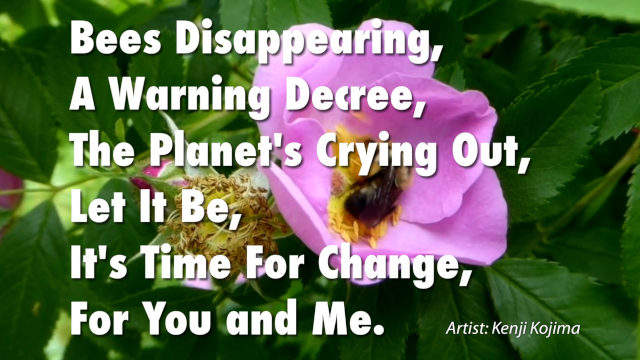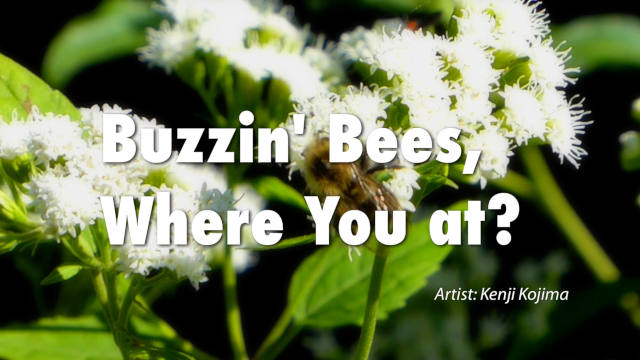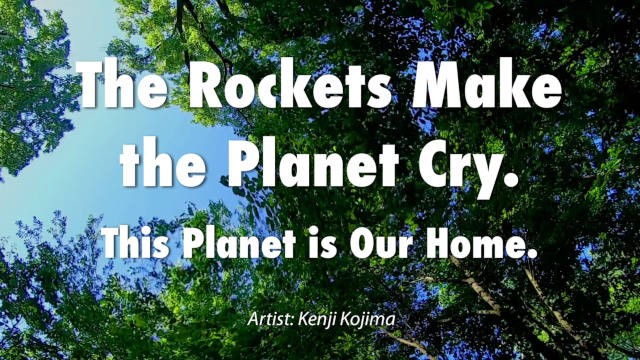Click on the image to select a video.


Mickey Mouse "Steamboat Willie", Reformation / Art is Changing Face
Digital art is the future,
It's limitless, it's free.
You can copy it, share it.
Version I YouTube Link: Mickey Mouse "Steamboat Willie",
|
This video is free to share. You can donate any amount to the artist if you approve of the video as art. Even if you disapprove, you can keep it. But it has no artistic value, as you have determined. Download: 1920x1080 • Copy It, Share It! Mickey Mouse "Steamboat Willie" Show Your Love!, 226.3 MB • Reformation / Art is Changing Face (Japanese Subtitle, 日本語字幕), 151.6 MB • Reformation / Art is Changing Face (Spanish Subtitle), 178.6 MB Download: 1280x720 • Copy It, Share It!, Mickey Mouse "Steamboat Willie" Version 2, 77.6 MB • Reformation / Art is Changing Face (Japanese Subtitle, 日本語字幕), 63.6 MB • Reformation / Art is Changing Face (Spanish Subtitle), 63.4 MB Show: Japanese / 日本語
Hide: Japanese / 日本語
AIが急速に発展して、デジタルアートの構築方法も大きく変化する時代を迎えています。しかしAIが蓄積している具象のビジュアルデータに、だいぶ古びた感覚を感じています。それとは逆に、AIが作り出した音楽をメディアアートに組み込んだところ、20世紀半ばに登場したポップアートに感じた新鮮さを、現在のアートに取り戻すことができました。理由の1つは、20世紀に隆盛を極めた現代音楽や前衛音楽に、行き詰まりを感じていたからかもしれません。また同時に感覚に大きく依存した芸術表現を通じて、社会・環境・政治・経済等の表現することに限界を感じていましたが、生成 AI を活用して、言語の壁を超えたマルチメディア作品で、直接的なメッセージを表現できるかもしれません。 アートワークの主題は、2024 年 1 月 1 日にパブリックドメインになった、長らく保護されてきたミッキーマウスの著作権です。アメリカの著作権は、議会によって何度も延長され現在は95年間です。95年の著作権期間は異常に長く、多くの継承や引用の作成を妨げてきました。引用は創造性の重要な手段です。私は著作権保護期間は10年程度で十分だと考えています。著作権問題は、現在の貨幣経済による際限のないお金の蓄積と物欲、そして不必要な資源の浪費にも関係しています。私たちは現在の価値観、生き方、芸術作品の倫理を再構築する必要に直面しています。 この作品のもうひとつ大事な点は、フリーでシェアできることです。デジタル アートの最大の特徴は、本物のアートを無限にコピーできることです。私はNFTアートは金融商品の1つでアートワークとは思っていません。デジタルアートは、貪欲な物質的所有物を破壊し、芸術の異常な金銭的商品価値を改革し、個々の鑑賞者とのつながりを復活させます。 ふたつのビデオ作品は、上に書いたような現代アートと著作権、またそれを取り巻く環境をコンセプトとして文章生成AIに問い、いくつかのバージョンの歌詞を書き出させました。その中から私の主張にあった詩を選び出し混合して、さらに文章生成AIにロックとラップの歌詞に調整しました。次にそれを元にいくつもの曲を音楽生成AIに作らせて、最後にボーカルとインストロメンタルに解体して、私がアレンジしてビデオ画像の曲としています。 どちらのビデオもランダムに並べた色彩のモザイクを、バックグラウンド画像として使っています。これはミッキーマウスのアニメ「蒸気船ウィリー」の1フレイムを、アルゴリズムで乱数とのビットごとの論理演算を使用して作り出した暗号化した色彩のモザイクです。私は、外部の混沌とした世界は、人間の感覚が解読して感じることができる暗号のようなものであると考えていています。ビデオ「Reformation / Art is Changing Face」の最後に「蒸気船ウィリー」の1フレイムに復号した画像を載せています。 Hide: Japanese / 日本語 Artist Statement: This artwork is accessible to people all over the world through the medium of the website. The ability to make countless genuine copies is the most significant advantage of digital art. The artwork video can be shared freely. This work refutes financial products like NFT art. Let digital art multiply infinitely. Let digital art multiply infinitely. This video is free to share. You can donate any amount to the artist if you approve of the video as art. Even if you disapprove, you can keep it. But it has no artistic value, as you have decided. To overflow with the limit of the desire to own a work of art. However, the individual appreciates art as art, and art does not exist just by possessing it. Digital art destroys greedy material possessions, reinvents the abnormal monetary commodification of art, and restores the connection to the individual viewer. The subject of the artwork is the long-protected Mickey Mouse copyright, which entered the public domain on January 1, 2024. Copyright in the United States has been extended several times by Congress and currently lasts for 95 years. The 95-year copyright term is unusually long and has prevented many inheritances and citations from being created. Quotes are an important means of creativity. I believe that a copyright protection period of about 10 years is sufficient. Copyright issues are also related to the endless accumulation of money and material greed of the current monetary economy, as well as the unnecessary waste of resources. We are faced with the need to rebuild our values, our way of life, and the ethics of our artistic creations. We are entering an era in which AI is developing rapidly and the way digital art is constructed is changing dramatically. However, I feel that the concrete visual data that AI accumulates is rather outdated. On the contrary, by incorporating AI-generated music into media art, I could bring back to contemporary art something similar to the freshness of Pop Art in the mid-20th century. One of the reasons was that they were tired of the music that was popular in the second half of the 20th century and called itself modern, avant-garde, and noisy art. At the same time, I felt that there were limits to expressing society, the environment, politics, economics, etc. through artistic expression that relies heavily on the senses, but by using generative AI, I created a multimedia work that transcends language barriers. It may be possible to express more direct messages. For these two videos, I asked the Generative AI about the concept of contemporary art and copyright and the environment around it, as mentioned above, and had it write several versions of the lyrics. I chose poems that fit my argument, mixed them, and then had the Generative AI adapt the lyrics to rock and rap. Next, I had the Music Generation AI create many songs based on the lyrics, and finally, it broke them down into vocals and instrumentals, which I then arranged and created a video image song. Both videos use a randomly arranged color mosaic as their background image. This is a color mosaic created by encrypting a frame of the Mickey Mouse cartoon "Steamboat Willie" with an algorithm that uses random numbers and bitwise logical operations. I believe that the chaotic world outside is like a code that human senses can decipher and feel. At the end of the video "Reformation / Art is Changing Face" there is a decoded image of "Steamboat Willie" in one frame. For more details, see my project "Bitwise Splitting and Merging Pixels". The Infinite Proliferation of Digital Art: A Restoration of Artistic Integrity Art has long been entangled with commerce, often reducing creative expression to a commodity valued more for its scarcity than its intrinsic beauty or meaning. The rise of digital art, with its capacity for infinite proliferation, challenges this paradigm, offering a way to dismantle the greed-driven mechanisms of the traditional art market and restore a more authentic relationship between viewers and artworks. Infinite Reproduction and the End of Scarcity One of the defining features of digital art is its reproducibility. Unlike a painting or a sculpture, which exists as a singular physical object, digital art can be copied and shared endlessly without loss of quality. This removes the concept of scarcity, which is the cornerstone of capitalist valuation in the art world. By eliminating scarcity, digital art undermines the notion that value is tied to exclusivity. Instead, it shifts the focus to the emotional, intellectual, and cultural impact of the artwork itself. Reclaiming Art for the Many The traditional art market has often been inaccessible, catering primarily to wealthy collectors and institutions. Digital art, however, democratizes access. Anyone with an internet connection can view, share, and even own a piece of digital art. This shift has the potential to dismantle the elitism of the art world, making art a collective experience rather than a luxury item. The infinite proliferation of digital art aligns with the idea that creativity should be a universal right, not a privilege reserved for the few. Challenging Capitalist Norms In a capitalist system, the monetary value of art often overshadows its aesthetic or cultural significance. Digital art disrupts this norm by existing outside traditional market constraints. Artists can distribute their work freely or experiment with new models like open licensing or pay-what-you-want systems. These approaches prioritize connection over profit, fostering a more direct and meaningful interaction between artists and audiences. The Role of Technology in Artistic Restoration Critics may argue that infinite reproduction dilutes the significance of art. However, this perspective often stems from an attachment to outdated market-driven values. In truth, technology offers tools to amplify artistic voices and reach wider audiences. Platforms for digital art encourage collaboration and innovation, breaking down barriers that once limited creative exchange. By embracing technology, artists can focus on storytelling, experimentation, and expression rather than producing works tailored to market demands. A New Era of Artistic Connection The proliferation of digital art invites us to reconsider what we value in art. Is it the price tag or the emotions it evokes? The exclusivity or the ideas it conveys? By dismantling the monetary hierarchy of the art world, digital art allows viewers to engage with works on a deeper level, unclouded by the pressures of ownership or investment. This reconnection between audience and artwork signals a restoration of art’s original purpose: to inspire, challenge, and unite. The infinite proliferation of digital art is not merely a technological phenomenon; it is a cultural shift. By removing scarcity and prioritizing accessibility, digital art dismantles the greed-driven structures of capitalist art markets. Show: Kenji Kojima's Biography
Hide: Kenji Kojima's Biography
Kenji Kojima was born in Japan. He moved to New York in 1980 and began his artistic career in 1980. For the first 10 years in New York City, he painted contemporary egg tempera paintings using medieval art materials and techniques. He was strongly attracted to contemporary art, but he felt stuck in the future of modern civilization and under capitalistic art. He tried to experience the history of the creation of the European concept of art through actual materials and techniques, that is, the history of art that is not written in literature. He was particularly interested in the basic materials of painting, such as ground, pigment, and medium, rather than the visual theme. He noticed in the history of art that as society and people's minds changed, materials developed and visual art changed. His egg tempera paintings have been collected by Citibank, Hess Oil, and others. The personal computer improved rapidly during the 1980s. He felt more comfortable with computer art than paintings. Ecologically, he felt guilty about wasting materials in the name of art. Working on the computer was clean, did not waste material, and made him feel lighter. In the early 1990s, he moved his artwork into the digital arts. He was particularly interested in developing interactive artworks. He studied computer programming himself. His early digital works were archived at the New Museum - Rhizome, New York. In 2007, he developed the computer software "RGB MusicLab" and created an interdisciplinary artwork that explores the relationship between images and music. He developed interactive software for his art but soon ran into a big problem: the software would not run on the new operating systems. He converted the artwork to video while the software ran on the operating system. He also started making videos and was interested in ecological art themes. He programmed the software "Luce" for the project "Techno Synesthesia" in 2014. His digital art series has been shown at media art festivals around the world, including Europe1, Brazil2, the Middle East3, Asia4, and the USA, including solo exhibitions in New York City5. After Covid-19, he could not go out to shoot a video. He found many archival artworks on the net. In 2021 he started the new series "The Musical Interpretation of Paintings", which creates music from classical image data such as paintings, photographs, and films. The project "Bitwise Splitting and Merging of Pixels" manipulates color pixels by bitwise operation. Generative AI has been greatly improved in 2023. He is considering using Music Generative AI. Kenji Kojima Resume Digital Art Exhibitions: the USA: 2026-2025 The Wrong Biennale, Online & Offline / 2024 OtoZono at HEART, New York. / 2024 the New Media Art Space at Baruch College, New York. / 2024 All Street, New York / 2023, 2020 Torrance Art Museum, Los Angeles, USA. / 2023 THE ELASTIC MIND, BROWARD College, Weston, Florida. / 2023 SOJOURNER, New York, NY. / 2022 Asian American International Film Festival, New York, NY. / 2012, 2016 Light Year, Brooklyn, New York. / 2021 UNCG International Sustainability Shorts Film Competition, UNC Greensboro, NC, USA. / 2019 The Harold B. Lemmerman Gallery, New jersey City University, Jersey City, NJ. / 2019, 2016, 2015 Williamsburg Art & Historical Center, New York, NY. / 2018 The Exchange, Bloomsburg, PA. 2018 WhiteBox, New York, NY. / 2015 ACM SIGGRAPH Digital Arts Community. / 2014 MediaNoche, New York, NY. / 2008 AC Institute, New York, NY. Europe: 2025 Internationales Digitalkunst Festival 2025, Stuttgart, Germany / 2025 ON SCREEN 2025, Vienna, Austria / 2025 OPEN NIGHTS FESTIVAL Vol.10, Thessaly and Lárisa, Greece / 2025 Selected in the TAA (The Art Association) TAA Open Call Video Competition 2025 Final Candidates (2024 YouTube Exhibition), Geneva, Swiss / 2024 Profusion of Colors, A.E. Corner, Galleria di Tirano, Viale Italia / 2024 Summer of Anthropocene, The New Museum of Networked Art, Cologne, Germany / 2024 DIGITAL VIDEO ART INTERNATIONAL STREAMING FESTIVAL 'The films of the Official Selection 2024', Season 3 & 5, Vienna, Austria / 2024 Technocene Berlin Templehof, Germany. / 2024 Open Media Art, Košice, Slovakia / 2025, 2024, 2023, 2022, 2020, 2019 Ie Rencontres Internationales Traverse, Toulouse, France. / 2021 FEX comtemporary media art, Cologne, Germany. / 2020 Institut für Alles Mögliche, Stützpunkt Teufelsberg, Belrin, Germany. / 2019 The festival BINNAR, Vila Nova de Famalicão, Portugal. / 2019 MADATAC X New Media Arts Festival, Madrid, Spain. / 2018 Athens Digital Arts Festival, Athen, Greece. / 2018 Mitte Media Festival, Berlin, Germany. / 2017 Simultan Festival, Timisoara, Romania. / 2016 Simultan Festival, Timisoara, Romania. / 2016 Brave New World Beyond the Wall, Berlin, Germany. / 2015, 2013 ESPACIO ENTER, Tenerife, Canary Islands, Spain. / 2014 BRAVE NEW WORLD, Berlin, Germany. / 2011 Jyväskylä Art Museum, Jyväskylä, Finland. / 2010 PROCESS Festival, Berlin, Germany. / 2009 RE-NEW Digital Art Festival, Copenhagen, Denmark. / 2002 Free Manifest, Frankfurt am Main, Germany. Brazil: 2025, 2023, 2022, 2020, 2016, 2012, 2011, 2010 FILE (Electronic Language International Festival) São Paulo, Brazil. / 2012 FILE RIO, Rio de Janeiro, Brazil. / 2010 FAD (Festival de Arte Digital), Belo Horizonte, Brazil. the Middle East: 2026 The Ras Al Khaimah Art Festival Biennale, United Arab Emirates / 2020, 2012 Istanbul Contemporary Art Museum, Turkey. / 2020, 2019 Paadmaan Video Event, Isfahan, Iran. Asia: 2021 Thailand New Music and Arts Symposium, Bangkok, Thailand. / 2020 the 150th Anniversary Gandhi Event, Kolkata, India. / 2019 Capital Normal University College of Cape Cod, Beijing, China & China University of Mining and Technology Yinchuan College, Yinchuan, China. / 2018 Gunung Sunda Festival, Sukabumi, West Java, Indonesia. / 2016 CeC 2016, North-Eastern Hill University, Shillong, Meghalaya, India. / 2010 Contemporary International New Media Art Invitational, Wuhan University of Technology, China. Hide: Kenji Kojima's Biography |
 Series "Copy It, Share It!" is licensed under
Series "Copy It, Share It!" is licensed underCreative Commons Attribution 4.0 International License. Credit must be given to the creator.
日本からのドネーションはここをクリック。 日本から任意の金額のドネーションはできません。



Ecological threats put humans, bees,
and other species at risk.
"Bee Dances Beach Rose (Rap)", "Buzzin Bees, Where You at? (Aria)"
and "The Rockets Make the Planet Cry"
https://kenjikojima.com/
Email: index@kenjikojima.com
Begins with Chaos - Lascaux / Bitwise Splitting and Merging of Pixels / The Interpretation of Painting by Binary